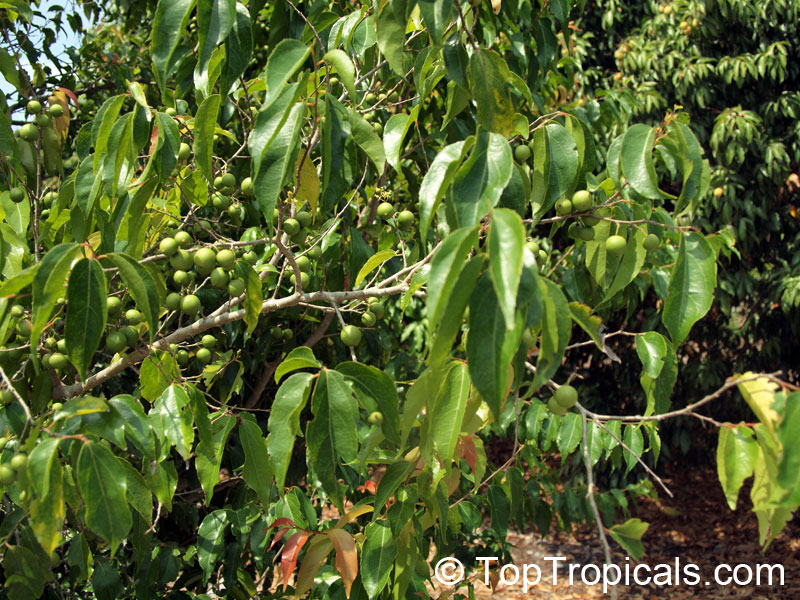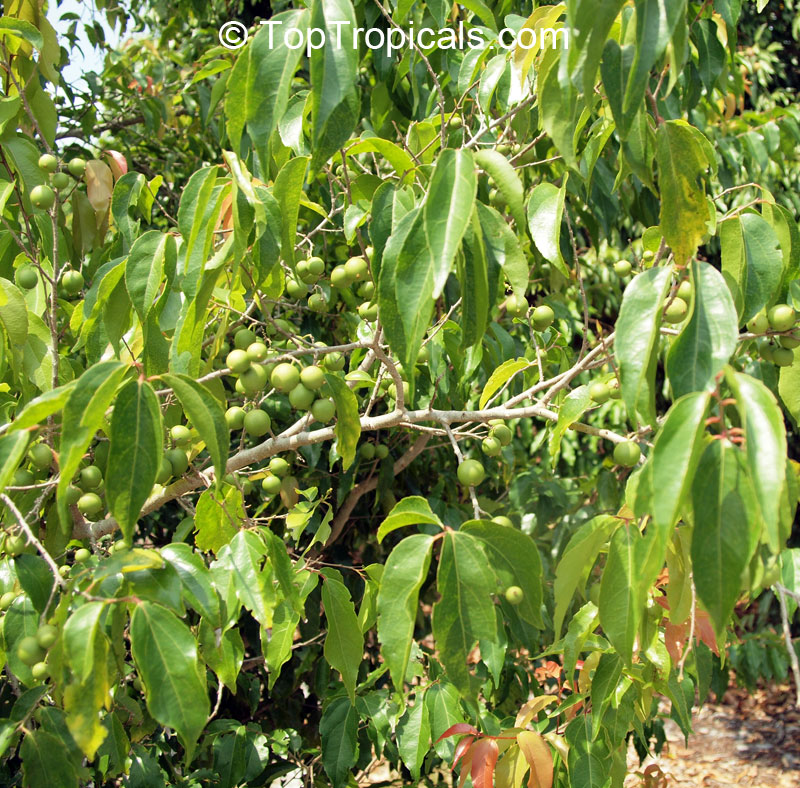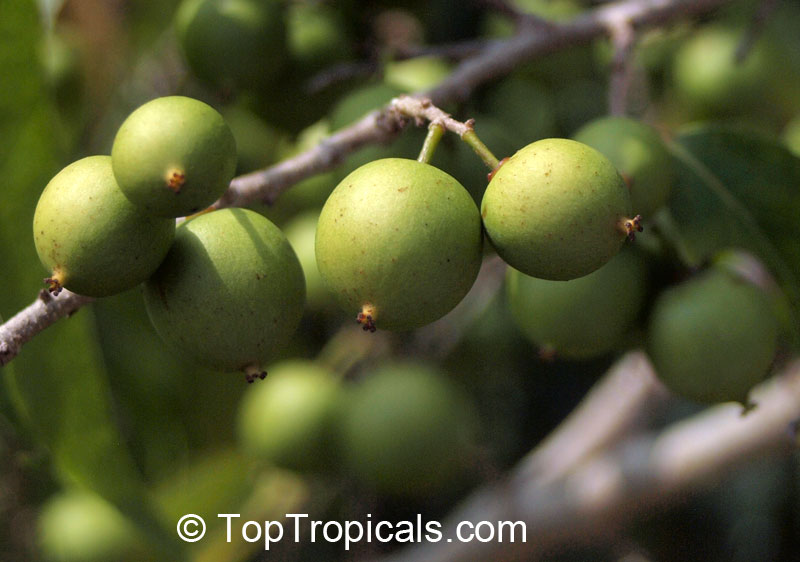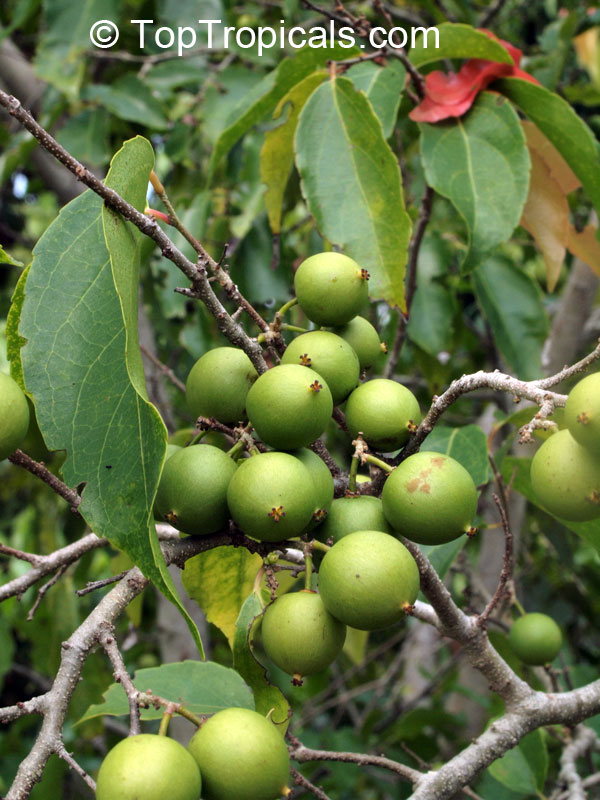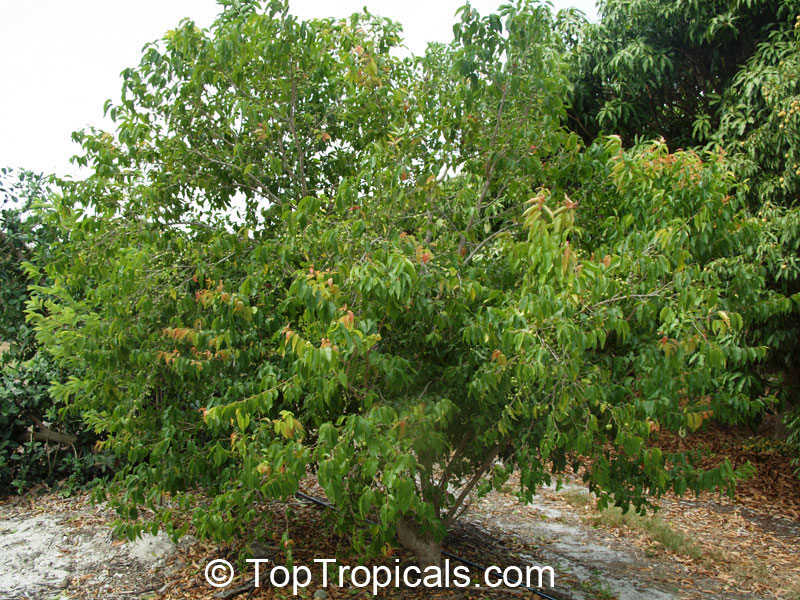Flacourtia rukam (Rukam)
Top Tropicals Plant Encyclopedia
Botanical names: Flacourtia rukam, Flacourtia euphlebia
Common name: Rukam
Family: Salicaceae (Formerly:Flacourtiaceae)
Origin: Malaysia








Rukam (Flacourtia rukam) is a tropical fruit tree that is native to Southeast Asia, but has also been introduced to Thailand and India. It grows best in USDA Zone 9-11 and thrives in humid conditions. The tree can be grown in a container and should be placed in a location with full sun or partial shade, and given regular watering. It is recommended to fertilize the tree with a slow-release fertilizer twice a year in the spring and summer, and to prune it selectively to control its shape and size. The tree can reach a height of 10-20 feet when fully mature.
Rukam is known for its abundant yellow and orange flowers which attract butterflies and hummingbirds. The tree also produces an edible fruit that is light green to pink or purplish-green to dark red in color, with a whitish, juicy, and acidic pulp. The ripe fruit can be eaten raw or used in dishes such as rujak (a fruit salad with spicy sauce), pickled, or made into jam or confectionaries. The young leaves of the tree are also edible and can be eaten raw in side dishes.
In addition to being an ornamental plant, Rukam is also used in traditional medicine. The young leaves, fruits, and roots of the tree are used to treat a variety of ailments. A root decoction is taken by women after childbirth, and the juice of the leaves is applied to inflamed eye lids. Rukam trees can produce a large amount of fruit, with some varieties producing up to 500 fruits in a season. These fruit are not only tasty, but are also rich in vitamins and minerals.
